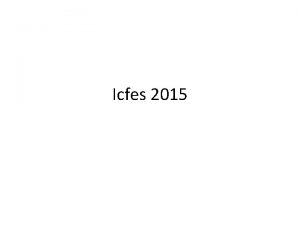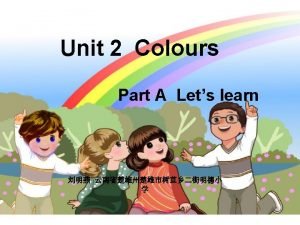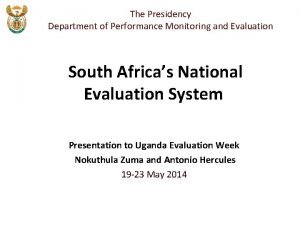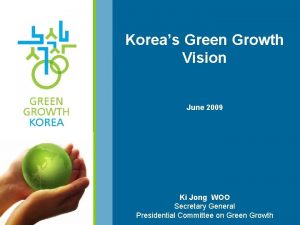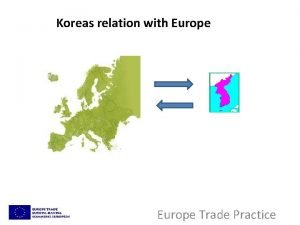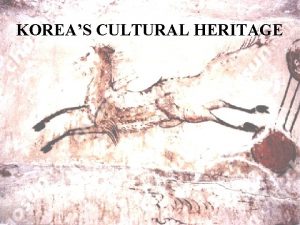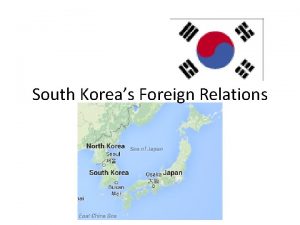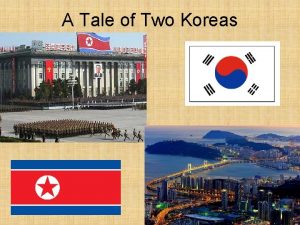Koreas Green Growth June 7 th 2012 Korean









- Slides: 9

Korea’s Green Growth June 7 th 2012 Korean Delegation to the OECD Kijune KIM

Key national circumstances • Korea’s Green Growth Strategy was established in 2008 - Coping with climate change & energy security, promoting new source of growth, and enhancing quality of life - 5 year rolling plan linked with budget • President’s strong commitment to pursue Green Growth

Institutional Partnerships • Presidential Committee on Green Growth (PCGG), two Chairpersons - Prime Minister & Private Sector • Global Green Growth Institute (GGGI) - working with OECD, World Bank and UNEP for Green Growth Knowledge Platform (GGKP)

What is the structure of the report? • Green Growth Indicators (23 from OECD’s) - Environmental & Resource Productivity - Natural asset base - Environmental quality of life - Economic opportunity & Policy response * Based on Relevance, soundness, and measurability

1. Environmental & Resource productivity Subject Indicators Emission GDP/GHG emission Improving, but stagnant in 2009 Improving, but stagnant in 09 -10 Energy GDP/Primary energy consumption Share of Renewable Energy Improving, but shore of target rate DMC/GDP Material Improving Municipal waste per capita Up & down, improved in 2009 Chemical fertilizer/ arable land Water Trend Improving; greatly improved since 2008 Municipal water per capita Improving; stagnant in 2010

2. Natural Asset base Subject Indicators Water Rainfall per capita Trend Stagnant Area of forest Decreasing Timber stock Increasing Share of threatened wildlife Share of aquaculture Improving Forest Biodiversity Fish Increasing

3. Environmental Quality of Life Subject Environmentally induced health problem Access to sewage treatment & drinking water Indicators Trend Population exposure to urban air pollution Improving; greatly improved since 2008 Urban green space per capita Improving Population connected to sewage treatment Improving Population with access to safe drinking water Improving

4. Economic opportunities and policy responses Subject Indicators Green R&D Government green R&D expenditure Green technology International patent applications Environmental industry Environmental sector employment Decreasing until 2007; increasing since 2008 Green finance Share of Green ODA Increasing Environment related tax & recovery cost Trend Increasing; greatly increased since 2008 Increasing Share of environment related tax Decreasing until 2009; but increased in 2010 Environmental protection expenditure Increasing

Summary • In general, the OECD’s green growth indicators show that Korea is in transition towards a greener economy - however, in some sectors, there is much room to be improved in the near future

